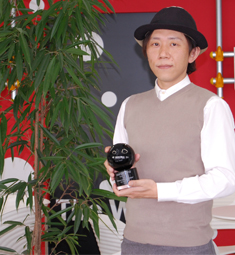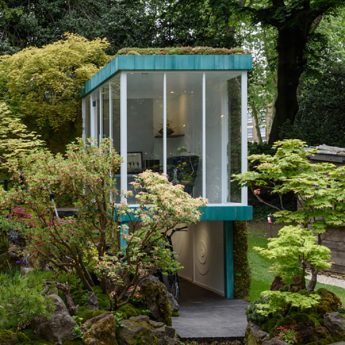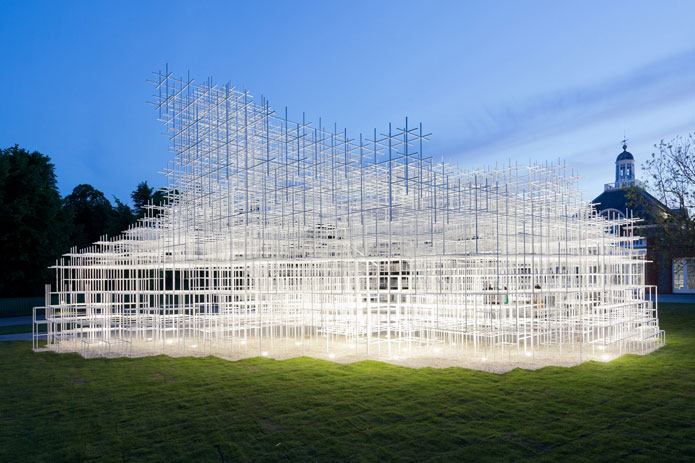
I&S BBDO Creative Director Kenichiro Shigetomi holds the Best of Show Design Lotus Award
Team celebrates winning regional advert design award
The Tokyo office of advertising agency I&S BBDO recently won a Best of Show Design Lotus Award at Adfest in Pattaya, Thailand, with a creation for food retailer Umino Seaweed.
The campaign, bringing together traditional Japanese design and laser-cutting technology, was developed to help the firm rebuild in the wake of the 11 March 2011 earthquake and tsunami.
Adfest, the oldest and one of the largest advertising competitions in the Asia-Pacific area, each year draws thousands of entries for awards that are considered a coveted mark of peer recognition.
ACUMEN spoke to the leader of the I&S BBDO team, Creative Director Kenichiro Shigetomi, a five-year veteran of the firm.
What does it mean to you and the firm to win this award?
On a personal level, I was pleased that my efforts at devising a new type of communication were recognised. As a creator, I find that important. But even more important is that we were working as a team, and the teamwork was acknowledged. That is really motivating for others in the firm; and for other teams working on other projects, it is inspiring.
Talk us through the design; what is it all about?
You have to begin with the product itself. The client is an extremely traditional Tohoku-based producer of seaweed products: nori, kombu and wakame. Even before the disaster last year, sales had been declining and the client had approached us about a campaign to try and reinvigorate the business.
So, as a team, we began by thinking about the packaging. But there’s really only so much you can do at that level. We were dealing with a very traditional product and the usual creative approach was to be very Japanese and use mediums such as sumi-e (brush and ink) or charcoal. We tried a host of typefaces, but finally concluded that the client’s needs were not going to be met simply by playing with the packaging.
So we looked at the product itself. Nori, the dried sheets of seaweed with which most people are familiar as the wrapping for sushi, owes a lot in the way it is made to the way Japanese paper (washi) is made. So we shifted our thinking: If this were paper, we’d be able to do all kinds of things with it, including cut patterns.
The patterns have a special meaning, don’t they?
Yes, they are all classic motifs that have long featured in Japanese history. We call them monyo. Together they represent happiness, longevity, respect for the past, and hope for the future. That seemed to fit well with the client’s desire to recover from the devastation it had experienced as a result of the earthquake and tsunami.
The designs are very beautiful. Can you explain them?
There are five: sakura (cherry blossom), mizutama (water drops), asanoha (hemp, a motif one used to find in children’s kimono in the Edo period), kikkou (sea turtle shell) and kumikkou (tortoise shell). They are very traditional designs and instantly recognizable to most Japanese, yet they are created using the latest laser technology. We really felt that we were reflecting the client’s basic philosophy.
Production of nori hasn’t changed for maybe 500 years, but we were introducing something very new to invigorate the business. It’s no longer enough to rely on traditional methods in this age of rapidly changing media. You have to innovate and match the passion of your clients. Actually, when you think about it, there is very little of my original design involved here. I am using traditional designs, familiar to most Japanese people, but I am applying them in a new way. So my role was actually as a catalyst.
Do you think the judges recognised that?
I imagine they were very surprised at first. People think of nori as this boring black wrapping for sushi. But we were able to show that you could do something very different with it. It is certainly a departure from tradition, but the truth is that what you call design—the Western concept—has been an important part of Japan’s culture for hundreds of years. I have inherited that.






